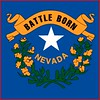On Tuesday I attended the “Navigating Nevada’s Economy Workshop” hosted by UNR. As far as I could tell, with the exception of a UNR camera crew who stopped by for a quick interview, I was the only member of the media present. Too bad, the workshop offered a powerhouse line-up of speakers from both government and academia focusing on our area’s economy. Economists, teachers, and computer programmers from the Bureau of Economic Analysis
(BEA) and the Regional Economic Analysis Project (REAP) combined to explain how data is collected, the analysis of that data, and how their websites are arranged. Both websites are inter-active and look to be very useful to anyone, in or out of government, interested in our local economy. Apparently, the local traditional media isn’t that interested.
Two big idea’s I came away with from the workshop were the problems and solutions to understanding an economic region. The other idea that was unstated, but occurred to me later, was the disconnect between economists and the media.
Data can only be collected by city, county, and state, but no-one in the public makes decisions based on lines on a map. Gary Smith, a retired professor from Washington State University and the driving force behind REAP, introduced the idea of “the State of Sierra.” In order to understand economic numbers, one has to take into account the fact that people travel. This is not just true with tourism. We might live in one town and work in another, crossing city, county, and state lines, producing and spending along the way. Simply looking at Reno’s numbers will only tell you so much about Reno’s economy. In order to reach an understanding, one has to look beyond Reno. I’ll explain more about this in Part 2 where I will attempt to demonstrate the REAP and BEA inter-active websites.
After I got home and was mentally digesting all that I had seen and heard, I started thinking about 2 things. One was Rob Brown’s presentation about the timeline in which economic data is received. The other was Mallory Rahe’s demonstration of using economic data to tell a story.
From time to time one can find stories in the press of inaccurate government figures or “inept unelected bureaucrats”. I’ll admit, taking shots at the government can be great fun, and more importantly one of the things that insures a free and independent press. However, when it comes to government revisions of economic numbers, it’s important to know the timeline by which the numbers are gathered in order to tell the story with any degree of accuracy. For instance, home foreclosures are known quantities within a month, but personal income is received via the IRS and is from the previous year. Information becomes more accurate as the information is gathered. Economists have to arrive at some initial conclusions using estimates sometimes derived by inference. It is only over time that hard data becomes available and estimates become known quantities. This is not only critical to telling an accurate story, but also in separating the truth from political cheerleading.
I could go on about other presentations, the RIMS II program which helps gauge the economic impacts of proposed developments, Dr. Keith Schwer‘s extensive study of Nevada and why he believes our state will lag behind in any recovery, an inside look at the Federal Reserve from a Fed economist, and general discussions of methodology. The depth of knowledge by each of the speakers was truly impressive. This was my second workshop at UNR within the last year and both were excellent - well worth the time, effort, and expense. Tomorrow we’ll look at some of the features of the REAP and BEA websites.
Monday, October 5, 2009
The Economic Workshop At UNR (Part 1 of 2)
Subscribe to:
Post Comments (Atom)




No comments:
Post a Comment